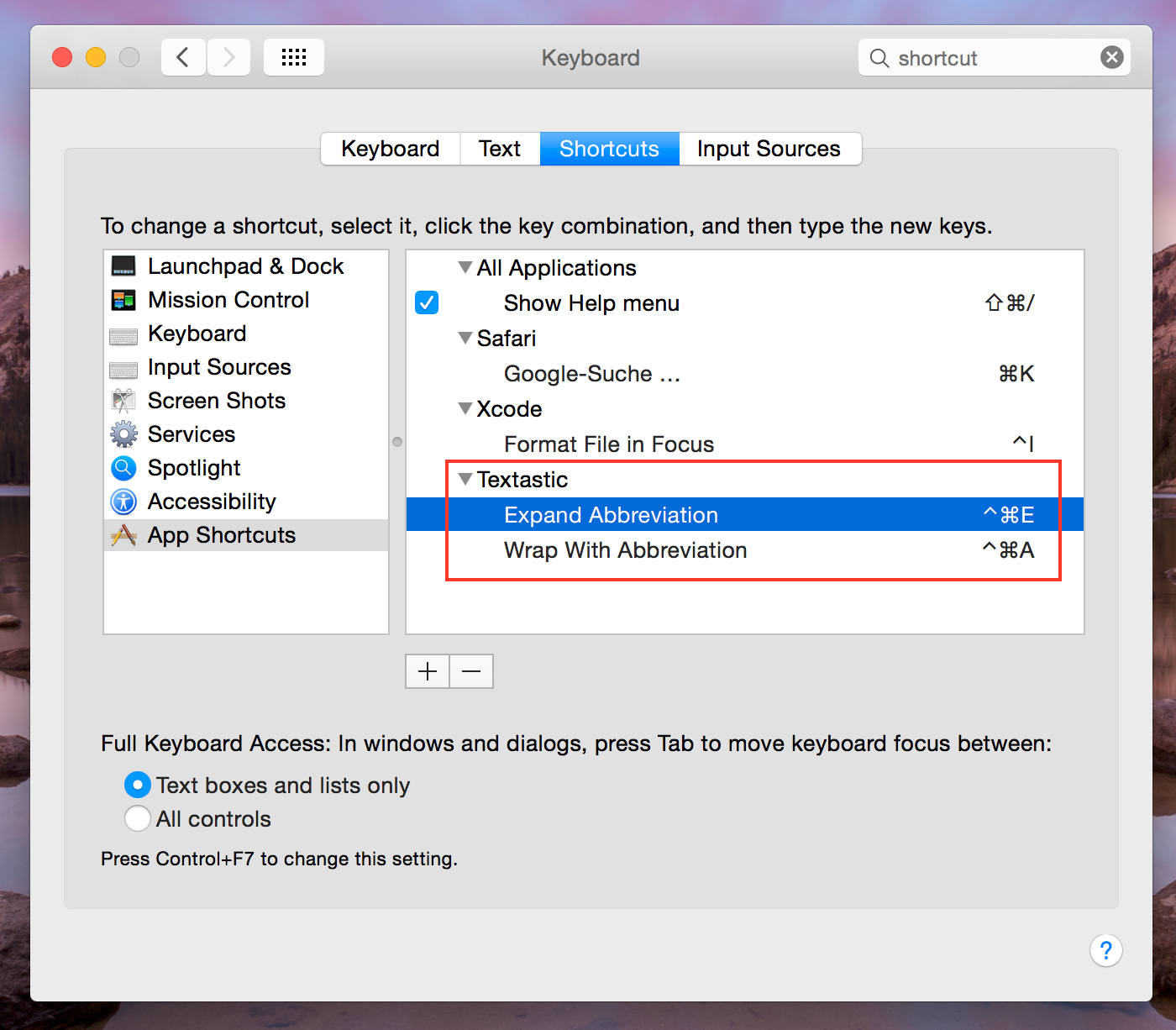Your comments
You are right, the standard Emmet keyboard shortcuts conflict with emacs commands.
As a workaround, you can go to your Mac's System Preferences -> Keyboard -> Shortcuts -> App Shortcuts and override the standard shortcuts for those two commands with other shortcuts. Here are screenshots of how this might look:


If you do this, you can use ctrl+a and ctrl+e as you are used to.
As a workaround, you can go to your Mac's System Preferences -> Keyboard -> Shortcuts -> App Shortcuts and override the standard shortcuts for those two commands with other shortcuts. Here are screenshots of how this might look:


If you do this, you can use ctrl+a and ctrl+e as you are used to.
I could reproduce the problem. This will be fixed in the next update. Thanks for reporting this issue!
I assume you are using the "Open…" command in Textastic to open the file from ownCloud. Does the same happen when you try to open and save such a file with another editor that supports the document picker like Byword?
I do not have an ownCloud server myself.
I do not have an ownCloud server myself.
If you purchase the latest version of Textastic for iPad in iTunes on a Mac or PC or on another iOS device that runs iOS 8, you can download the last compatible version from the Purchased section in the App Store on your iOS 7 device. Just make sure you are using the same iTunes account.
This is explained in this Apple support article: http://support.apple.
This is explained in this Apple support article: http://support.apple.
Ah, ok, I just saw that you did successfully reference the Firebug server directly. So yes, that's the workaround in this case.
You cannot reference it locally when you use the "Open…" command, since the file is located in the Working Copy sandbox while the firebug-lite.js is located in Textastic's sandbox. You can try to use the "stable live link" version instead which references https://getfirebug.com/firebug-lite.js
Also, Textastic has only access to this single file in Working Copy and not other files in the same folder in Working Copy.
Also, Textastic has only access to this single file in Working Copy and not other files in the same folder in Working Copy.
I guess combining -n and -W would work:
-n, --new Open a new instance of the application even if one is already running.
-W, --wait-apps Blocks until the used applications are closed (even if they were already running).
Customer support service by UserEcho


~/Library/Containers/com.textasticapp.textastic-mac/Data/Library/Application Support/Textastic